Bambu Lab A1 Mini Full Review
The Bambu Lab A1 Mini is the compact, beginner-friendly version of the A1 3D printer, with almost the same capabilities. Despite its small size, this printer is packed with advanced features, including noise-canceling technology, rapid print speeds, full self-calibration, over-the-air updates, and self-diagnostics, and integration into the MakerWorld repository, all for just $199. What makes it stand out is its AMS lite system ready, giving it the multi-color capability that others typically lack. This combo comes to only $349. Hailed as the Best Beginner Friendly 3D Printer in our Best PLA 3D Printers for Hobbyists article, we will take a look at why this model takes the title in this Bambu Lab A1 Mini Full Review.
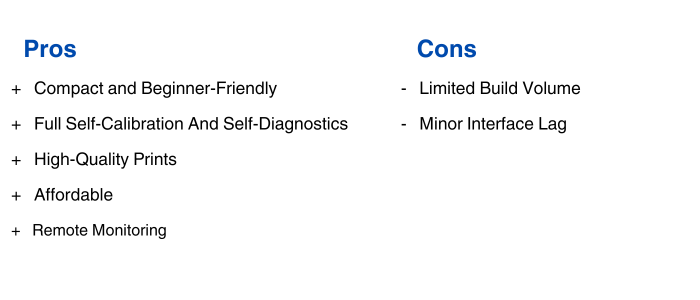
Design and Build Quality
Compact and User-Friendly Design
The Bambu Lab A1 Mini showcases a sleek, modern design that makes it an excellent choice for beginners. Its compact build volume of 180 x 180 x 180 mm ensures it fits neatly on any desk or workspace. The cantilever-style design provides a balanced and efficient motion system, enhancing its overall functionality.
The A1 Mini features a 2.4-inch color touchscreen, which, although small, is intuitive and user-friendly. This interface allows beginners to easily navigate various settings and options, making the initial setup process straightforward. The printer is ready to use within ten minutes of unboxing, requiring only minor hardware adjustments, which further underscores its user-friendly nature.
Sturdy and Reliable Build Quality
Despite its small size, the A1 Mini has excellent build quality. Its sturdy frame is surprisingly heavy for its size, contributing to enhanced stability during printing. This weight reflects the high-quality materials used in its construction, ensuring long-term durability and reliable performance. The linear rails allow for precise movements for high-quality prints. This feature, typically found in more expensive models, highlights Bambu Lab’s dedication to providing a top-notch product even in their entry-level machines.
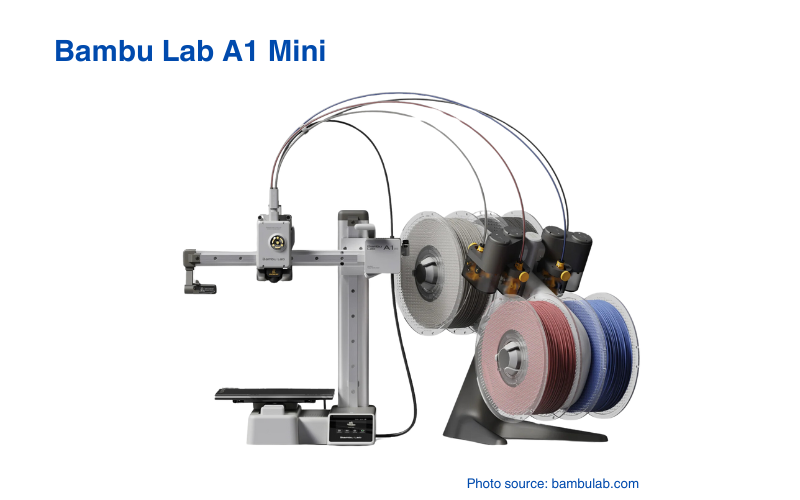
Key Features and Specifications
| Key Features | Specifications |
|---|---|
| AMS Lite Compatible | Build Volume: 180 x 180 x 180 mm |
| Self-Diagnostics | Print Speed: Up to 200 mm/s |
| Full Self-Calibration | Layer Height: 0.1-0.3 mm |
| MakerWorld 3D Model Repository | Nozzle Diameter: Standard 0.4 mm (interchangeable) |
| Toolless Nozzle Swapping | Max Nozzle Temperature: 300°C |
| Nozzle Wiper | Filament Compatibility: PLA, PETG, TPU |
| High-Quality Camera | Supported Filament Diameter: 1.75 mm |
| Remote Monitoring | Connectivity: Wi-Fi, USB |
| Noise-Canceling Technology | Display: 2.4-inch Color Touchscreen |
The A1 Mini builds on Bambu Lab’s reputation for innovation and user-friendly design. The noise-canceling technology ensures quiet operation, while the full self-calibration and self-diagnostics make it easy for beginners to get started without a steep learning curve. The high-quality camera and remote monitoring capabilities allow users to keep an eye on their prints from anywhere.
The AMS Lite compatibility expands the printer’s capabilities with multicolor and multi-material printing, making it more versatile for various projects. The inclusion of over-the-air updates ensures that the A1 Mini stays up to date with the latest features and improvements. The intuitive 2.4-inch color touchscreen simplifies navigation and control.
Comparisons
Original Prusa Mini+
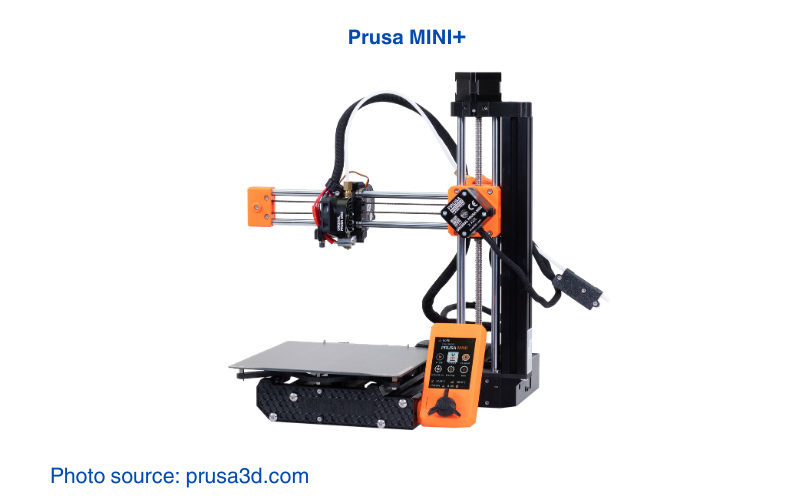
The Original Prusa MINI+ is contender of A1 Mini in terms of size, printing capabilities and features. Let’s find out how one fares over the other:
Design and Build Quality: The Original Prusa Mini+ has a similar build volume of 180 x 180 x 180 mm and a cantilever design like the A1 Mini.
User Interface: The Prusa Mini+ features a 2.8-inch color LCD screen, which is slightly larger than the A1 Mini’s touchscreen. Both interfaces are user-friendly.
Features: While the Prusa Mini+ includes features like mesh bed leveling and a magnetic spring steel print sheet, the A1 Mini offers full self-calibration, self-diagnostics, noise-canceling technology, and over-the-air updates..
Print Quality and Speed: The A1 Mini, with its linear rail system and fast print speeds, outpaces the Prusa Mini+ in terms of speed.
Filament Compatibility: Both printers support a wide range of filaments, including PLA, PETG, and TPU. However, the A1 Mini’s AMS Lite system for multicolor and multi-material printing offers greater flexibility compared to the Prusa Mini+.
Price: The Original Prusa Mini+ semi assembled variant is priced higher at $459 than the A1 Mini at $199. The A1 is a more affordable option with advanced features.
Creality Ender-3 V3
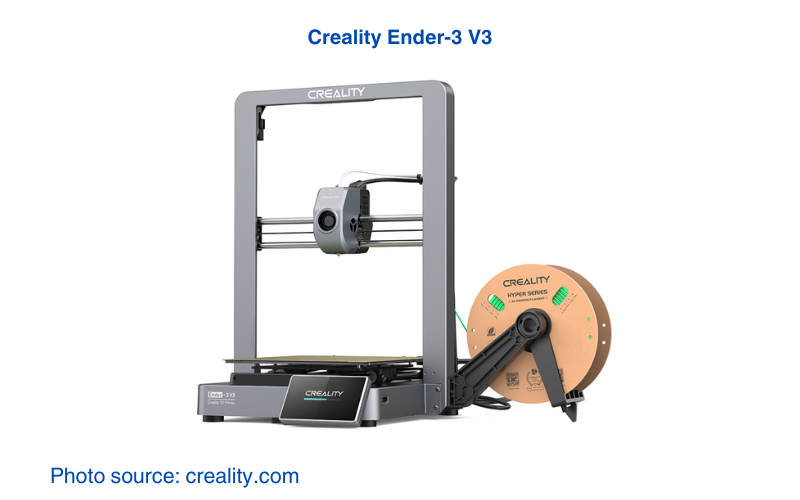
The Creality Ender-3 V3 carries the build quality and advanced features Creality is known for. When comparing to the A1 Mini, let’s take a look at the features that matter for making a choice of purchase:
Build Size: The Bambu Lab A1 Mini features a compact and modern design with a build volume of 180 x 180 x 180 mm, which is slightly smaller than the Creality Ender-3 V3’s 220 x 220 x 250 mm.
User Interface: The A1 Mini is equipped with a 2.4-inch color touchscreen, providing an intuitive and user-friendly interface. In contrast, the Ender-3 V3 comes with a color screen and rotary knob, which, while functional, might not be as modern or sleek as the touchscreen of the A1 Mini.
Features: Both printers include self-calibration features, but the A1 Mini goes further with full self-calibration, self-diagnostics, and over-the-air updates.
Filament Compatibility: The A1 Mini supports PLA, PETG, and TPU-like filaments, and with AMS Lite compatibility, it can handle multicolor and multi-material printing. The Ender-3 V3, while versatile with different filaments, does not have an equivalent multicolor system, which gives the A1 Mini an edge in this area.
Real World Applications
The Bambu Lab A1 Mini is designed to meet a variety of practical needs, making it a valuable tool for everyday tasks. Here are some common applications where the A1 Mini excels:
Home Organization and Home Décor Items
The A1 Mini is great for printing custom storage solutions and organizers. You can print drawer dividers, tool holders, spice racks and cable management clips. Home décor items such as planters, picture frames, and wall art can also be printed in the Mini accurately. It allows you to create items that fit perfectly in your space.
Replacement Parts
One of the most practical uses of the A1 Mini is printing replacement parts for household items. A broken clip, a missing knob, or a custom part for a DIY project. The A1 Mini can produce durable and functional components quickly and accurately.
Customized Gifts
The A1 Mini is perfect for creating personalized gifts such as custom keychains, phone cases, unique jewelry and decorative items. You can design and print items according to the receiver’s hobbies and interests.
Small Tools and Gadgets
Creating small tools and gadgets is another practical application. This includes items like custom hooks, measuring items, and simple hand tools. These items can be designed to fit specific needs and can be printed quickly for immediate use.
The Best Beginner-Friendly 3D Printer
The Bambu Lab A1 Mini is the ideal 3D printer for beginners, combining ease of use, advanced features, and affordability. Its compact design and intuitive 2.4-inch touchscreen make it user-friendly. Key highlights include automatic calibration, diagnostics, and quiet operation, ensuring a smooth and quiet experience. It consistently produces high-quality prints with its precise rail system and easy nozzle changes. It supports various filaments and offers AMS Lite compatibility for multicolor printing. Priced at $199, its features are often seen in higher-end models. The Bambu Lab A1 Mini simplifies 3D printing and enables a wide range of projects, making it the perfect choice for those new to 3D printing.

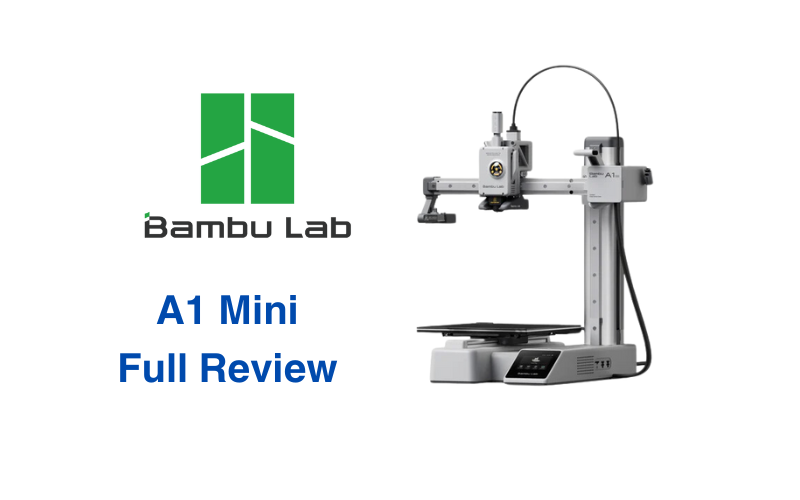
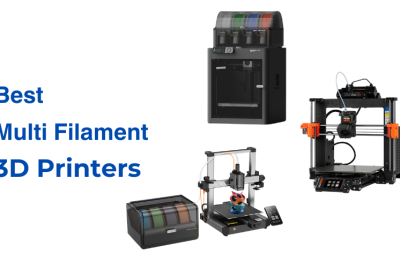
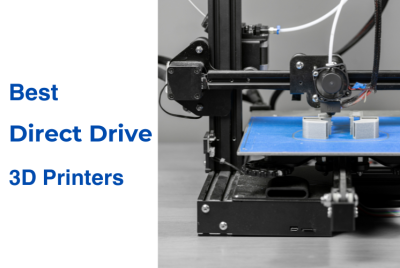
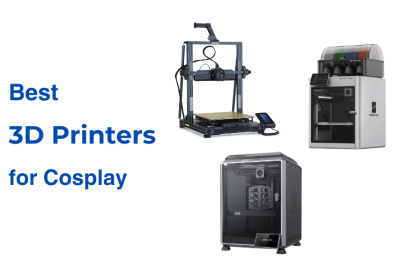
Comments are closed.